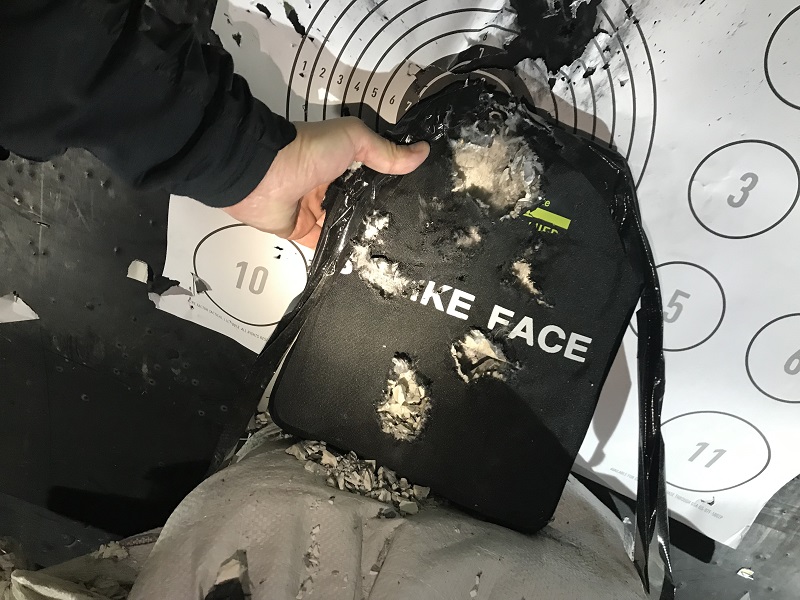Hol Dir den wöchentlichen SPARTANAT-Newsletter.
Dein Bonus: das gratis E-Book von SPARTANAT.

BASICS: Schutzklasse?
Der Schutz vor Kugeln ist ein verständliches Bedürfnis. Die Auswahl der richtigen ballistischen Schutzklasse ist entscheidend, basierend auf der zu erwartenden Bedrohung. Die Standards NIJ, TR und VPAM sind ähnlich, aber im Detail unterschiedlich. Die Standards sind nicht direkt vergleichbar und sollten nicht synonym verwendet werden. Mehler bietet einen Überblick über die Schutzklassen. NIJ wurde aktualisiert und neue Schutzklassen eingeführt. Die Auswahl der Schutzklasse hängt von der erwarteten Bedrohung ab, z.B. NIJ III für Soft-Core Munition, SK3 für Stahlkernmunition oder VPAM 7 für .233 Rem und .308 Win. Am besten ist VPAM 7. Schutzklassen sind nicht direkt vergleichbar und sollten nicht synonym verwendet werden.
Sich vor Kugeln zu schützen, ist ein durchaus verständliches Bedürfnis. Wer sich effektiv schützen will, braucht die richtige ballistische Schutzklasse. Diese richten sich nach der zu erwartenden Bedrohung, also sprich die Munition, mit der ihr beschossen werdet.
Auf dem westlichen Markt haben sich drei große Normen herausgebildet, nach denen beschusssichere Platten und Einlagen getestet werden. Einmal das amerikanische NIJ System, dann die deutsche TR der Bundeswehr und die europäische VPAM-Norm. Alle sind sie ähnlich aber im Detail doch anders.
Vorweg, diese Standards sind nicht direkt miteinander vergleichbar und auch nicht synonym zu verwenden. Von Mehler gibt es eine sehr schöne Aufstellung, die wir euch heute präsentieren wollen.
Amerikanische NIJ Norm

Im Bild seht ihr die auszuhaltenden Munitionsarten je nach Schutzklasse. Anzumerken ist hier, dass die Schutzklasse NIJ III nur Weichkern aufhalkten muss. NIJ IV muss (nur) einen einzigen Schuss eines panzerbrechenden Geschosses vom Kaliber .30 M2 (.30-06 Springfield) mit einer Geschwindigkeit von 2.880 Fuß/Sekunde (878 Meter/Sekunde) und einem Gewicht von 166 Gr (10,8 g) aufhalten. Die Backfacedeformation ist hier auf 45mm begrenzt.
Mittlerweile wurde die NIJ Norm überarbeitet und neue Schutzklassen eingeführt –HIER gehts zum Artikel. Eine gute Entwicklung, unserer Meinung, da die Kaliber, mit denen getestet wird eher dem aktuellen Bedrohungsbild entsprechen.
Technische Richtlinie der Bundeswehr

Die Schutzklasse 3 (SK3) muss bereits Langwaffenmunition mit Stahlkern abhalten. Schutzklasse 4 (SK 4) muss drei Schüssen im Kaliber .308 Winchester, Geschossart: FMJ/PB/HC (Stahlkern), Auftreffgeschwindigkeit: 820 m/s ± 10 m/s aus 10 m standhalten. Was weniger als NIJ IV ist, aber dafür mehr als einen einzigen Schuss.
Europäische VPAM Norm

VPAM bietet die meisten Unterscheidungen bei den Schutzklassen. Diese reichen von VPAM 1 bis VPAM12, wobei VPAM 11 und VPAM 12 aufgrund des Gewichts nur noch bei Fahrzeugen Verwendung finden. VPAM 12 hält übrigens .50 BMG auf. Die wohl snprechendste Schutzklasse ist VPAM 7. Sie bietet Schutz gegen mehrere Treffer aus .233 Rem (5,56×45) SS109 (Auftreffgeschwindigkeit: 950 ±10 m/s; Nennmasse: 4 g) und .308 Win. (7,62×51) DM111 (Auftreffgeschwindigkeit: 830 ±10; Nennmasse: 9,55 g). Also Stahlkernmunition, aber noch nicht ganz Panzerbrechend und entspricht in etwa SK3 und ist mehr als NIJ III.
Erst Schutzklasse VPAM 9 entspricht in etwa der SK4, weil hier die gleiche panzerbrechende Munition verwendet wird. Weiters darf es nur eine Backfacedeformation von weniger als 25 mm geben.
Was ist das richtige für mich?
Ganz schön komplex, nicht wahr? Im Kern der Sache richtet sich die Wahl der Schutzklasse nach der zu erwartenden Bedrohung. Seid ihr nur am Schießplatz unterwegs und habt Angst in den Rücken geschossen zu werden, dann bietet sich NIJ III an, da nur mit Weichkern Munition zu rechnen ist.
Wollt ihr euch aber vor SS109 und ähnlichen Patronen schützen, sollte es besser SK3 oder VPAM 7 sein. Eine höhere Schutzklasse kann natürlich immer gewählt werden, aber diese Platten sind im Regelfall deutlich schwerer und vor allem teurer
MEHLER PROTECTION im Internet
SPARTANAT ist das Online-Magazin für Military News, Tactical Life, Gear & Reviews.
Schickt uns eure News: [email protected]
Werbung
Hol Dir den wöchentlichen SPARTANAT-Newsletter.
Dein Bonus: das gratis E-Book von SPARTANAT.


